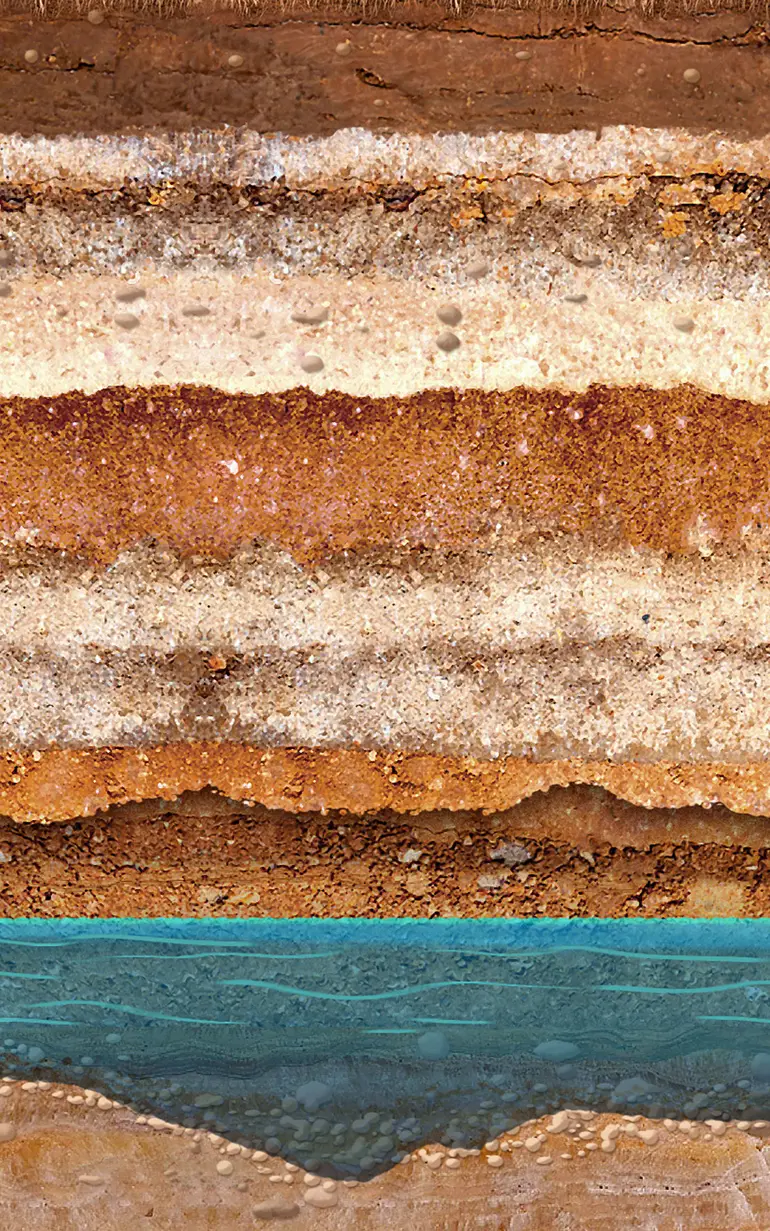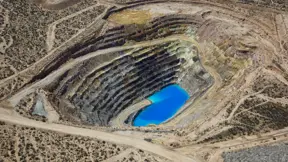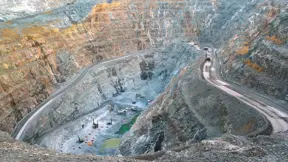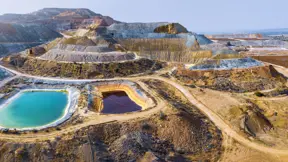

FEFLOW
All-in-one subsurface modelling solution
Celebrating over 40 years of reliability, FEFLOW is the cutting-edge groundwater modelling and simulation software, allowing you to simulate complex flow, mass, and heat transport processes with unmatched accuracy and efficiency. Specifically designed for; Mining & Metals, Civil Engineering & Geotechnics, Geothermal Energy and Environmental Services. Simulate a multitude of groundwater processes involving flow, contaminants, groundwater age and heat transport under fully or variably saturated conditions.
Whether you're designing sustainable mining operations or implementing comprehensive geothermal projects, its user-friendly interface and integration with other MIKE models provides the detailed insights necessary to predict and react to environmental challenges efficiently.
How does FEFLOW help?
No in-house modellers?
Get our expert modellers on board for your consulting projects either as a partner, to provide extended user support, or for model and project reviews. Submit an inquiry
Areas of application

Contaminant fate and transport
Simulate the movement and degradation of contaminants in groundwater systems to guide remediation strategies.

Dewatering at construction sites
Simulate groundwater dewatering scenarios to prevent construction delays and structural damage.

Drought and water scarcity
Assess groundwater availability and sustainability under drought conditions to improve water resource management.

Feasibility of a geothermal system
Evaluate the hydrogeological potential for geothermal energy extraction to ensure system efficiency and sustainability.

Groundwater and geotechnical
Predict the impacts of excessive groundwater withdrawal, aiding in the prevention of land subsidence and related damages.

Groundwater protection zones
Determine the optimal design and management of groundwater protection zones to safeguard drinking water sources.

Groundwater remediation
Model the effectiveness of remediation techniques in contaminated aquifers to optimise clean-up processes.

Model water dynamics in mining
Model water inflows and interactions in mining environments to ensure operational safety and environmental compliance.

Seepage through dams and levees
Simulate seepage processes to assess and improve the structural integrity of dams and levees.

Surface water-groundwater interaction
Explore the interactions between surface water and groundwater to manage resources effectively and mitigate environmental impacts.
Additional capabilities & unique features
Explore our latest support resources, including guides, videos, and FAQs in our Knowledge Base.
What’s new in FEFLOW - 2025
New Implicit Modelling Workflow
Leverage FEFLOW 10's new implicit modeling workflow to construct geologically meaningful surfaces. By using geological observations such as boreholes and stratigraphic order, you can effortlessly generate structural models. The comprehensive toolbar enhances workflow optimisation, providing functionalities for manual borehole digitisation, quickly importing/exporting hundreds of boreholes, viewing all existing data, and more. Watch Video
Map Projections and Online Visualisation
Upgrade your FEM models or Supermesh by setting a reference projection, enabling coordinate-aware mapping with seamless, on-the-fly reprojection for alignment between project and map file coordinates. Additionally, users can enhance model visualisation and presentation by selecting from multiple styles of "Online Background Maps." Watch Video
Extended Equation of State (EOS)
Take advantage of FEFLOW 10's new "Temperature Relative to Boiling" parameter to help determine if a problem remains in the liquid phase or involves multiphase conditions. The expanded EOS section also now better supports deep geothermal modelling cases with temperatures up to 350 °C and fluid pressures up to 100 MPa. Density can be expressed as a non-linear function of temperature, concentration and pressure. Watch Video
Surface Water and Groundwater Coupling
Assess water resource management, flood risk, and environmental impacts related to river networks and surrounding groundwater systems by coupling FEFLOW with MIKE 1D.
Mining & Metals
FEFLOW has been designed to reduce environmental impact and make mining practices more sustainable. The software has been successfully applied in open-cast mining, underground mining, and brine deposit mining (e.g. Lithium).
It streamlines geological data management and modelling, correcting flawed 3D datasets to enable complex 3D hydrogeological representations.
This accurately represents detailed geological structures typical in mining. Additionally, the software efficiently integrates geological models from tools like GeoModeller 3D, GOCAD, and Leapfrog, optimising workflows.
FEFLOW also offers the unique capability to exactly integrate a mining plan, allowing you easy updates during operational practices.
Key Mining & Metals capabilities:
- Develop strategies for efficient mine dewatering – Rely on FEFLOW to model mine dewatering, perform seepage analysis, simulate pit-lakes, assess pumping schemes and estimate water volume. You can also design containment and clean-up strategies for contaminants released in the process or forecast the effects of mine flooding after abandonment.
- Estimate expected dewatering volumes and times – Automatic seepage assignment, the possibility to include intermittent seepage stages and cutting edge visualisation tools to identify the location and direction of seepage enables users to model various leakage problems from tailings, earth dams, underground pipe networks or underground waste storage tanks.
- Estimate ground subsidence and more accurately predict pumping rates through hydromechanical coupling – FEFLOW’s new Hydromechanical Coupling module allows users to estimate ground subsidence and more accurately predict pumping rates when changes in effective stress cause changes in pore structure – a significant benefit to mining applications when accurate inflow predictions are critical. Read more
Geothermal Energy
Maximise geothermal project efficiency with FEFLOW's Geothermal extension. Seamlessly interconnect over hundreds of borehole heat exchangers, and effortlessly manage well configurations for between open and closed-loop geothermal systems. This feature saves time and enhances profitability, making it ideal for geothermal applications.
Key Geothermal Energy capabilities:
- Optimise geothermal installations by modelling geothermal energy and heat transport processes – Users can model all relevant components of heat transport processes including near surface geothermal installations, deep geothermal installations, open and closed loop systems, borehole heat exchangers (BHE), heat exchanger arrays and aquifer thermal energy storage (ATES). You can also simulate the heat transport in porous and fractured media under saturated and unsaturated conditions including interaction with heating and cooling installations.
- Understand the feasibility of the geothermal project – Model hundreds of borehole heat exchangers (BHEs) in serial, parallel and/or a custom connection using our Well Manager tool. FEFLOW’s BHE Editor allows you to simulate without limits coaxial, U-shape and doable U-shape geothermal boreholes.
- Measure the impact of groundwater flow – FEFLOW’s extensive groundwater capabilities brings you the level of detail required to understand the potential impact of the groundwater flow to geothermal installations.
- Quantify the potential conflict of geothermal systems with existing installations – Evaluate the negative impact of existing geothermal installations could have on your planned system. Quantify precisely the arrival time of cold and warm plumes to the new geothermal boreholes.
Environmental Services
FEFLOW combines hydrological modelling capabilities for integrated water management. It models the dynamical interaction between surface and groundwater using FEFLOW and MIKE software, offering a comprehensive understanding of the water cycle. The software simulates groundwater age to trace water origins and mixing, crucial for risk assessments and delineating capture zones in 2D and 3D. Its built-in reactive transport engine and advanced geochemical capabilities with PHREEQC coupling allow for detailed contaminant and chemical reaction modelling, essential for managing diverse groundwater pollutants.
Key Environmental Services capabilities:
- Maximise consumer product efficiencies and the development of innovative technologies and new designs – FEFLOW isn’t just for groundwater modelling – it can support your work in the material production sector as well. This agile software empowers users to create highly detailed 3D visualisation of the infiltration and storage processes, predict absorption behaviour and optimise absorber materials with varying geometry and physical properties.
- Pinpoint sources of contamination – FEFLOW allows you to accurately assess groundwater contamination for one or more chemical species, perform risk analyses including best and worst case scenarios and conduct reactive transport modelling including kinetic reactions and equilibrium sorption. Users can also define well-head protection zones, simulate groundwater flow paths and perform capture zone delineation for pump and treat systems. Read more
- Simulate saltwater intrusion – Reduce risks to freshwater reservoirs by modelling coastal saltwater intrusion processes, upcoming processes below production wells, contamination and remediation as well as freshwater storage in saline aquifers. Read more
- Accurately model capture zones and determine the water origin and proportions of respective sources – With FEFLOW, you can analyse catchment zones, capture zone travel time, the remaining time within a specific water body before exiting the model and water origin within each capture zone. Users can also estimate the water volume required to maintain demanded balances and perform spatio-temporal optimisation of water resources such as pumping schemes and use of artificial recharge. The hydraulic connections between different water systems such as surface water and groundwater as well as different groundwater systems and mixing processes of varying water sources (i.e. fresh water and old saline/brackish groundwater) can also be modelled. Learn more
- Build large regional scale models without losing necessary local precision – Rely on FEFLOW to analyse groundwater allocation, catchment zones, wellhead protection, water volume estimation, water origin analysis and well-field optimisation. You can also calculate travel time and model groundwater/surface water interaction, contamination risks, capture zone delineation and managed aquifer recharge.
- Take advantage of a fully hydrodynamic approach for river modelling – Model rivers in the groundwater context more seamlessly using the new Hydrodynamics coupling approach between FEFLOW and MIKE 1D. The flexible selection of river branches will help ease decision making on what/where to couple FEFLOW and MIKE 1D. Watch video
- Tap into the power of integrated groundwater resources management – Investigate groundwater problems from a broader perspective. MIKE SHE results can be directly imported into FEFLOW given a new data regionalisation method. This enables you to impose the knowledge of the catchment hydrology in FEFLOW for a better definition of groundwater recharge for example.
Civil Engineering & Geotechnics
Ensure the safety and operability of dams, tunnels, and construction sites with FEFLOW's advanced subsurface water modelling. It employs advanced 3D formulations for detailed vadose zone modelling. The software enhances soil representation using various parametrization models. Its piHMC extension analyses land subsidence from groundwater extraction, and the piFreeze extension addresses the impacts of freezing and thawing, offering specialised seasonal insights. Read more
Key Civil Engineering & Geotechnics capabilities:
- Easily collaborate across disciplines with the new DXF/DWG format support – The new DXF/DWG format support in our application makes it easier than ever to collaborate across disciplines. With this feature, you can directly access and interpret DXF and DWG files within the application environment, eliminating the need for additional software or conversions. This seamless integration enhances efficiency and productivity by bridging hydrogeological insights and CAD design data, allowing professionals from various fields to work together more effectively. Whether you’re a hydrogeologist or a CAD designer, this capability streamlines the collaboration process, enabling you to leverage the strengths of both disciplines and achieve better results in your projects.
- Keep the construction site dry - Using FEFLOW’s cutting-edge simulation methods, easily estimate the real location of the groundwater level, predict level rise and the require dewatering rates to keep the construction site apart from unexpected conditions.
- Model the infiltration around your tunnels – Test the effectiveness of grouting methods and mitigate the risk of infiltration. Use advanced time-varying modelling techniques to model the real excavation of the tunnel and the infiltrate rate along the construction phase.
- Seepage through dams and levees – Take full advantage of FEFLOW’s unsaturated modelling techniques to estimate in 2D cross-sections or fully 3D domains the infiltration process. Quantify the seepage rates directly from our interactive panels.
Integrated conceptual modelling
- Update models faster using a new conceptual modelling approach – Spend more time on concepts and less on meshing with FEFLOW’s new conceptual modelling approach. Users can now define material information before generating the mesh thereby eliminating the risk of lost information after re-meshing. Watch video
- Work seamlessly with leading 3D geological modelling programs – Build your geologic model in GeoModeller 3D, GOCAD or Leapfrog Hydro and transfer it to FEFLOW.
- Create robust, accurate and spatially detailed results – Produce precise spatial representation of complex geology and geometry for rivers, fractures, pipes, tunnels and well locations by creating layer-based, partially unstructured or fully unstructured meshes in 3D. You can also deactivate and reactivate mesh elements within the model domain to account for temporal changes such as tunnel excavations or mine plans. Learn how
- Represent complex hydrogeologic conditions with elaborate, state-of-the-art visualisation – Create high quality snapshots or video sequences using the highly flexible planar, cross-sectional and 3D visualisation tools. Experience an unprecedented level of insight using Oculus Virtual Reality technology to navigate the model mesh and visualise areas of interest in three dimensions. Learn how
- Manage scenarios and models with ease – Run scenarios, alter boundary conditions, view results across different vertical layers, evaluate the impact of changes in input assumptions on simulation results and archive your models with FEFLOW’s intuitive design. You can even create a real-time operational system in MIKE OPERATIONS using a FEFLOW model.
Efficient modelling workflows
- Control all groundwater wells (flow, mass and heat) from a central location – Using FEFLOW 8.0’s new Well Manager, it’s easier than ever to create, edit and delete Well BC, Multilayer Wells and BHEs, the most important boundary condition in a groundwater model. With just a few clicks, users can import hundreds of wells to gather feedback on problem classes and to identify whether a groundwater well already exists.
- Streamline well management and optimisation with the enhanced Well Manager Editor – The updated Well Manager Editor simplifies well management by allowing users to group diverse well types, whether they are water or geothermal wells, for more streamlined operations. The Well Manager Editor is evolving into an ‘orchestrator,’ offering users the convenience of testing and applying rules to well groups effortlessly. This transformation in functionality greatly boosts efficiency by enabling users to efficiently handle wells within these groups and apply rules to them, resulting in more efficient and effective well management processes. Watch video
- Optimise well management with three versatile new Well Manager rules – First, streamline well management with the ‘Inactive Wells’ rule, which enables hassle-free deactivation while retaining data integrity. This ensures you can efficiently manage inactive wells without compromising the integrity of your data. Second, enhance efficiency with the ‘Shared Properties’ rule, which simplifies property changes across multiple wells to ensure consistency. This rule streamlines the process of making property changes, reducing errors and maintaining uniformity across your well portfolio. Lastly, achieve pump rate distribution more efficiently using the ‘Distributed Rate’ rule, which allocates rates equally among wells for optimal performance. This helps maximise the productivity and effectiveness of your well operations by ensuring an even distribution of pump rates.Watch video
- Create more robust 3D models using a new workflow – Automatically build 3D models (layered-based, partially-unstructured and fully-unstructured) from a 2D Supermesh using a new, simplified workflow. Watch video
- Leverage new 3D editing tools in FEFLOW Supermeshes to decrease reliance on third-party software – Elevate your experience with the enhanced 3D Supermesh creation, editing, and selection methods. Say goodbye to the need for external software as you can now perform these tasks seamlessly within FEFLOW. It all begins with a single surface, which serves as the foundation for constructing an entire 3D Supermesh domain. When dealing with complex fault systems, the 3D Supermesh Plane, equipped with its buffer capabilities, empowers you to incorporate intricate details effortlessly. Watch video
- Achieve full model parametrisation in the Supermesh with extended workflows – FEFLOW 8.0 includes extended workflows for model conceptualization in the Supermesh. This enables users to more easily change geometries in the Supermesh (i.e. assign materials, point properties and line properties) before creating a mesh thus reducing the risk of information loss. Watch video
- Import a MODFLOW mesh and results into FEFLOW – MODFLOW users can now take advantage of FEFLOW’s superior results visualisation tools and modelling capabilities by importing an existing MODFLOW 6 model. Learn how
- Support complex projects with a mature programming interface (API) and free library of plug-ins, applications and examples – Extend FEFLOW’s functionality using a convenient programming interface which makes plug-in development a manageable task – even for less experienced programmers. Benefit from greater access to the FEFLOW kernel and better documentation when building a DSS or during complex modelling. In addition, the FEFLOW-Python interface accelerates daily modelling workflows from pre-processing (material parametrisation) until post-processing including the automatic export of results, creation of impressive graphics with Python libraries, etc. Learn more
- Interact with FEFLOW using your own code with the improved IFM, Python and FEFLOW consoles – Developers now have access to more than 20 new APIs directly from the IFM interface to support the new conceptual modelling approach. Additional controls are also available including multi-threading for Python runs, the ability to change material properties through the programming interface and a new switch-solver in the FEFLOW console.
- Build your entire FEFLOW project directly within the FEFLOW Python interface – The extended Python interface allows you to generate both 2D and 3D meshes effortlessly, granting easy access to mesh generators and interpolation methods directly through scripts. This feature enables you to efficiently test and evaluate new conceptual models, all while accommodating variations in geometry and discretisation with minimal time investment. With the power of Python scripting at your disposal, building and customising your FEFLOW projects has never been more flexible and time-efficient, empowering you to streamline your workflow and explore different modelling possibilities. Watch video
- Extract 2D meshes from existing 3D models using the new Cross-Section Generator within the Python Interface – With the introduction of the Cross-Section Generator within the FEFLOW Python Interface, you can now extract 2D meshes from existing 3D models. This innovative feature streamlines the process, making it easier to create cross-sections and enhance the visual representation of your models for presentations and reports. The improved FEFLOW Python Interface 2D mesh extraction process simplifies your workflow, allowing for more efficient data visualisation and report generation. This enhancement empowers users to seamlessly incorporate cross-sections into their projects, improving both their workflow efficiency and the overall quality of their presentations and reports.
- Maximise productivity and save time on setup, simulations and results evaluation – There’s no need to jump between platforms as FEFLOW is completely integrated. The highly intuitive user interface will be your constant companion – from initial model setup to the presentation of high-quality results graphics.
- Access your results quickly with simple workflows and parallel solvers – Run fast simulations, even on large models, thanks to FEFLOW’s advanced matrix solvers including the algebraic multigrid solver, SAMG, and the parallel direct solver, PARDISO.
- Easily visualise and import data with unique map support – Users can access a variety of 2D and 3D map data formats or import a model directly from other geological software such as Leapfrog, GeoModeller 3D and GOCAD. Plus, live connections to local or remote spatial database systems are supported in addition to standard file formats like ASCII text and MS Excel, dxf and shp.
- Take advantage of the free results reviewer – In Viewer Mode, you can access FEFLOW’s advanced visualisation and post-processing capabilities free of charge. Plus, model reviewers and clients no longer need a software licence to evaluate input data and simulation results.
- Start modelling in the cloud with Microsoft Azure cloud support in FEFLOW and FePEST GUIs – Open FEFLOW on Azure Marketplace and start modelling in the cloud in four simple steps. Plus, Microsoft Azure provides a one-click solution for cloud deployment and run execution – from one to thousands. With no infrastructure to set up, you can track results in real-time within the GUIs and try out additional cloud computing resources right away. Learn more
Uncertainty quantification and model calibration
- Increase reliability of your model results with FePEST – All FEFLOW packages include FePEST – a convenient graphical interface for using PEST and PEST++ with FEFLOW models. It facilitates the setup process and gives immediate graphical feedback on the calibration process and more. Also, parameter estimation or uncertainty analysis tasks can be executed in parallel on many computers. Recent FePEST updates expand the calculation capabilities with built-in cloud parallelisation with Azure services. Read more
- Uncertainty quantification in FePEST – FePEST, a dedicated tool for history matching (model calibration), uncertainty quantification and sensitivity analysis now support the use PEST++ within FEFLOW models. With the new Iterative Ensemble Smoother (PESTPP-IES) method, users can directly quantify the uncertainty associated with groundwater models. Watch video
- Refine data control with the revamped Observation Point Dialogue and centralised user interface – Now, all the model outputs required for calibrating and validating your work are consolidated into one convenient location, streamlining your data management process. You can seamlessly manage budget groups and effectively track flow rates in various contexts, whether it’s within pits or rivers, ensuring precise control over your hydrogeological data. Additionally, staying on top of data is simplified with content group management, which allows effortless tracking of mineral mass within specified volumes. Lastly, you can achieve a deeper understanding of your models by utilising multiple reference curves, enabling more nuanced analysis and insights.
- Modelling without limits with MIKE Cloud and FEFLOW – The new Cloud Simulation panel allows modelers to deploy FEFLOW / FePEST runs to the cloud as a one-click solutions. Results can be monitored in real time. DHI offers a number of configurations to fit any modelling project.
Proven applicability, reliability, and efficiency
Have confidence in your work knowing that all parts of the FEFLOW simulation engine have passed extensive benchmark testing against analytical solutions, physical laboratory test results and results from other well-known simulation systems. Plus, you’ll also be supported with extensive, transparent documentation on FEFLOW‘s physical basis and internally used methods.
Let's get started
Learn how your project can benefit from this all-in-one subsurface modelling solution.
You may also like
Related technologies
How can we help?
With our global network of offices, we make sure you get the right answers to your local needs. Let us know what you're interested in (e.g., product features, trial license, pricing, etc.) and we will get back to you.







